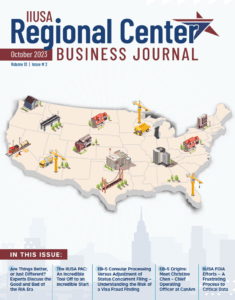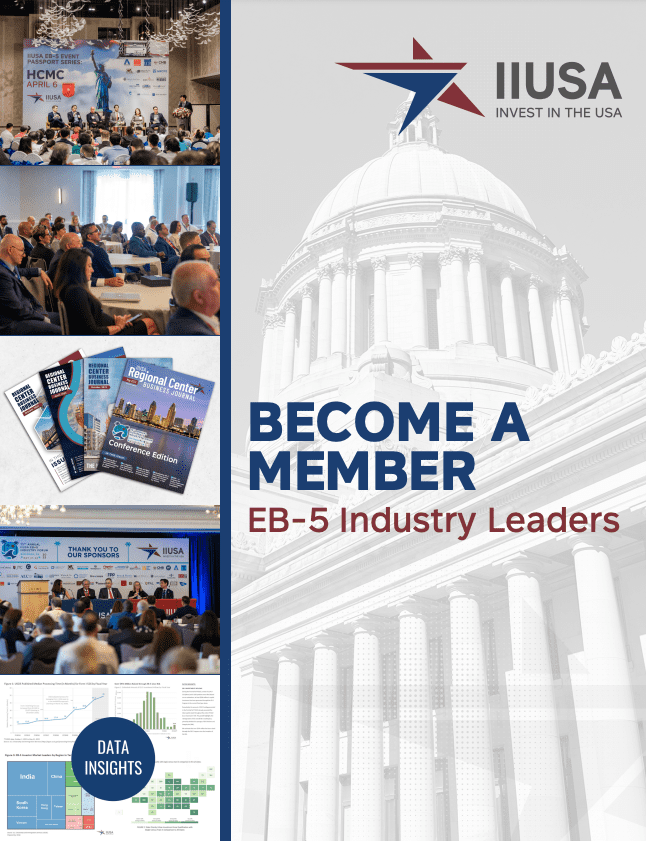EB-5 Reform and Integrity Act
Explained
In 2020, IIUSA worked closely with Senator Grassley and Senator Leahy for the introduction of the bipartisan EB-5 Reform and Integrity Act, a much-needed legislation that protects EB-5 investors and stablizes the EB-5 market.
In addition to a five-year reauthorization of the EB-5 Regional Center Program, the EB-5 Reform and Integrity Act also includes strong integrity provisions that protect for good faith investors and lawful Regional Centers from any bad actors seeking to defraud investors.
Many Benefits of the Bill
The EB-5 Reform and Integrity Act is a significant step in the right direction, one which is unanimously supported by IIUSA’s Board of Directors. Among others, the legislation’s key benefits for the EB-5 industry include:
- Five-year reauthorization;
- Reasonable reform measures enabling EB-5 industry to operate with reasonable oversight;
- Good faith Regional Center and NCE protections where the JCE is barred;
- Innocent investor protections for debarred projects including:
- Age-out protection for children;
- Priority date retention; and
- Use of recovered funds for another investment;
- No retroactive application to investor petitions;
- Regional Center oversight under a reasonableness standard;
- No strict liability of Regional Centers for third party acts.
In short EB-5 Reform and Integrity Act has less burden on Regional Centers and more investor protections than even in the industry-supported 2015 Flake-Schumer integrity-only bill.
Section by Section Summary
(Download PDF Summary | Full Text of the Bill)
Click the sections below for more details:
SECTION 1. Short Title.
This section simply states the title of the proposed law, “EB-5 Reform and Integrity Act of 2020.”
SECTION 2. Reauthorization and Reform of the Regional Center Program.
This section adds onto existing INA 203(b)(5) which ends at subparagraph (D) and adds subparagraphs (E) through (Q).
Subparagraph (E) Regional Center Program.
Subparagraph (E) incorporates the current regional center authorization statute. It contains standards for establishing a regional center, which will be required to include a description of the policies and procedures reasonably designed to ensure program compliance and monitor new commercial enterprises and job-creating entities.
Attestations confirming compliance with “good actor” provisions in subparagraph (H) will also be required. Ten percent (10%) of required jobs must be directly created but may be established by employees of the job-creating entity and estimated by economically valid methodologies. Regional centers are required to retain 5-year records and will be audited at least once every 5 years.
Subparagraph (F) Business Plans for Regional Center Investments.
Subparagraph (F) requires regional centers to file business plans for specific projects, what we today call “exemplar” applications on the Form I-924. Importantly, the business plan need not be approved before investor petitions may be filed. There is a list of items required in the application, including material investment risks, material litigation, and information regarding fees paid by the regional center, new commercial enterprise, or any issuer of securities to agents, finders, and brokers involved in the offering.
Subparagraph (G) Regional Center Annual Statements.
Subparagraph (G) requires annual statements containing several certifications generally to the certifier’s knowledge after due diligence investigation. The regional center must certify that it is only involved with bona fide actors not precluded by subparagraph (H) and that it is in compliance with securities requirements set out in subparagraph (I) as well as promoter requirements in subparagraph (K).
Sanctions for failing to submit, knowing submission of untrue facts, or failure to conduct itself in accordance with its designation will subject a regional center to fines, temporary suspension, permanent bar, or termination.
Subparagraph (H) Bona Fides of Persons Involved with Regional Center Program.
Subparagraph (H) precludes persons failing to meet the bona fides requirements from involvement with a regional center, new commercial enterprise (“NCE”), or job-creating entity (“JCE”). A person is precluded if the person (1) has committed a crime or offense involving fraud, (2) is subject to an adverse order by a financial regulator, (3) would be barred under U.S. immigration inadmissibility laws, or (4) has been listed, disciplined or reprimanded for reasons including fraud.
A separate preclusion applies to a person who is not a U.S. national or a permanent resident. Foreign governments also may not fund or have any ownership or administration role over a regional center, NCE, or JCE, but a foreign investment fund owned by a sovereign wealth fund or foreign fund permitted to do business in the U.S. may be involved with the ownership, though not the administration of, a JCE.
Subparagraph (I) Compliance with Securities Laws.
Subparagraph (I) requires compliance with U.S. and applicable State securities laws. It specifies the content of the initial and annual regional center certification, which must confirm compliance with securities laws to the best of the certifier’s knowledge after a due diligence investigation. Discovery of noncompliance is required to be reported along with remedial efforts and certification that the regional center and associated parties are back in compliance.
Significantly, the regional center’s oversight requirement now has a reasonableness standard. A regional center is required to use commercially reasonable effort to “monitor and supervise” securities transactions. In prior iterations of this provision, this obligation was open and undefined.
Subparagraph (J) EB-5 Integrity Fund.
Subparagraph (I) creates a fund to monitor, investigate, ensure compliance, and to conduct audits and site visits. Starting October 1, 2021, the annual fee is $20,000 from each regional center, reduced to $10,000 for one with 20 or fewer total investors in the prior year. A failure to pay the fee will subject the regional center to a penalty and termination. The DHS will be required to submit an annual report describing the uses of the fund in the prior year.
Subparagraph (K) Direct and Third-Party Promoters.
Subparagraph (K) authorizes DHS to prescribe rules and standards for direct and third-party promoters (including migration agents) to oversee the promotion of EB-5 offerings. The rules and standards may include: registration with USCIS, certification of compliance with subparagraph (H)’s bona fides requirements, guidelines for accurately representing the visa process to investors, and guidelines describing permissible fee arrangements under securities and immigration laws.
Subparagraph (L) Source of Funds.
Subparagraph (L) requires business and tax records or similar records to be filed with form I-526, including tax returns of any kind filed during the past 7 years (or another period determined by the DHS) by or on behalf of the investor. The identity of all persons transfer funds into the U.S. on the investor’s behalf is required and any funds used to pay costs and fees associated with the investment, not limited to the capital investment, will need to be shown as lawfully sourced.
Gifts and loans now have a good faith requirement accompanied by an emphasis on disqualification of funds from impermissible sources including illegal activity. The donor’s records will be required in gift cases.
Subparagraph (M) Treatment of Good Faith Investors Following Program Noncompliance.
Subparagraph (M) provides substantive relief and procedures to preserve immigration benefits for investors associated with terminated or debarred EB-5 entities. Under subparagraph (M), when a regional center is terminated or NCE or JCE debarred, DHS will notify investors. Investors will be given 180 days then to file an amendment or file a notice with DHS to confirm or establish continued eligibility.
Within the 180 days, the NCE can affiliate with a regional center in good standing, if the associated regional center is terminated. If the NCE is debarred, the investor can associate with an NCE in good standing. Additional investment is needed solely to the extent necessary to satisfy job creation. Amendments may be filed without being deemed material change and recovered funds may be used to meet EB-5 requirements.
Investors will retain their priority dates and, significantly, children will be protected from age-out.
None of these benefits apply if the investor was a knowing participant in the conduct leading to the termination or debarment.
Subparagraph (N) Threats to the National Interest.
Subparagraph (N) requires DHS to deny or revoke EB-5 benefits including approved petitions, designations, and exemplar applications if approval is contrary to the national interest of the United States for reasons relating to public safety or national security. If a regional center, NCE, or JCE has its participation in the EB-5 program terminated for national interest reasons, any person associated with the terminated entity will be permanently barred if the person was a knowing participant in the conduct leading to the termination.
Subparagraph (O) Fraud, Misrepresentation, and Criminal Misuse.
Subparagraph (O) allows DHS to deny or revoke EB-5 benefits upon determining that the benefit was predicated on fraud or criminal misuse. The DHS will provide notice of its determination.
Subparagraph (P) Administrative Appellate Review.
Subparagraph (P) provides for administrative appellate review by the Administrative Appeals Office (“AAO”) for any DHS determinations made under INA section 203(b)(5). There is judicial review to review a determination after exhaustion of all administrative appeals. This means if there is a denial or revocation, the decision must first be appealed with the AAO before seeking remedy in federal court.
Subparagraph (Q) Fund Administration.
Subparagraph (Q) requires separate accounts for all NCEs including the involvement of a fund administrator unless waived., and additional procedures for affiliated JCEs, In general, independent fund administrators will be required to monitor, track, verify, and approve fund transfers. Fund administrator retention may be waived if an NCE or affiliated JCE is controlled by or under common control of a registered investment advisor or broker-dealer. The DHS will grant a waiver in other instances involving an annual independent financial audit.
Effective Date.
Section 2 of the Integrity Act will take effect 90 days after enactment.
SECTION 3. Conditional Permanent Resident Status for Alien Entrepreneurs, Spouses, and Children.
This section amends INA section 216A, which governs the removal of conditions on residence. A petition for removal of conditions is made on the Form I-829.
A key amendment to Section 216A is that if the required jobs are not all created at the time of filing the Form I-829, investors will have 1 additional year to create the remaining jobs. If the additional year is needed, the investor’s capital also must be invested during that time.
A defrauded investor who makes a second investment in accordance with subparagaph M may file for removal of conditions during the 90-days before the second anniversary of the subsequent investment, though the procedural mechanics of this intended benefit will need to be sorted out.
SECTION 4. EB-5 Visa Reforms.
ection 4 adds new defined terms, including “affiliated job-creating entity,” “job-creating entity,” and “certifier.” An “affiliated job-creating entity” is a JCE that is controlled, managed, or owned by any of the people involved with the regional center or NCE.
Section 4 provides further age-out protection for children of investors whose conditional residence is terminated under section 216A or the new subparagraph (M), where the investor files a subsequent EB-5 petition. The dependent must remain unmarried and the second I-526 petition must be filed not later than 1 year after the termination of conditional residency.
Concurrent filing of EB-5 petitions and adjustments of status applications will now be permitted in cases of immediate visa availability, and EB-5 petitions will also get the same reprieve for status violations for 180 days or less under INA section 245(k). These provisions bring EB-5 more in-line with benefits afforded to other employment-based immigrants.
SECTION 5. Procedure for Granting Immigrant Status.
An EB-5 petitioner must establish eligibility at the time of filing. This means that pending petitions will be decided by the law in place at the time of their filing. Petitions filed under the regional center program as amended by the new subparagraph (E), will establish eligibility under the Integrity Act and be subject to the approval of an exemplar approved under the new subparagraph (F). This Section also requires that DHS continues to adjudicate petitions while it is implementing the changes in the program required under the Act.
SECTION 6. Timely Processing.
Not less than 1 year after enactment, the Director of United States Citizenship and Immigration Services (“USCIS”) will complete a fee study. After completing the fee study, the Director will be required to set fees at a level to process petitions according to the schedule in Section 6, including 180 days for initial regional center designations and investment/exemplar applications, 240 days for investor petitions, and 90 and 120 days, respectively, for the same filings based on targeted employment area investments.
SECTION 7. Transparency.
DHS employees will be required to act impartially without preferential treatment. Written and oral communications are required to be kept in the record of proceedings and logs also maintained. Communication from a third party may not be made a part of the record without notice and the opportunity to respond. Law enforcement information may also not be made a part of the record without consent.
Frequently Asked Questions
Q: By agreeing to reform-only, aren’t we giving up leverage to get more visas?
A: The EB-5 industry suffers from declining support and shrinking leverage because of high-profile fraud and a lack of reform. Some Members of Congress, upset about the lack of reform to date, are slowly chipping away at the program. With the EB-5 Reform and Integrity Act of 2020, rather than lose leverage, we will gain the leverage we currently lack.
Q: How can I support the bill when the legislation doesn’t get more EB-5 visa numbers?
A: There are no additional visa numbers offered by any viable bill at this time. With the EB-5 Reform and Integrity Act of 2020, the EB-5 program is in a stronger position to seek more visas in the next administration. Without reform, hope for visas in return for a promise of reform is not possible because legislators will oppose such a measure without reform which has been promised since 2015 but never realized.
Q: Doesn’t the bill just create burdens and costs?
A: The EB-5 Reform and Integrity Act of 2020 is the most industry-friendly of all the integrity measures in prior bills, including the Flake-Schumer from 2015. The industry will not get a better deal in terms of reasonableness of oversight than this bill.
Q: Isn’t it true that the bill gives nothing to good actors since they don’t defraud their investors?
A: Reform is an industry-wide priority because it is a predicate to more visa numbers and long term authorization. The deal the industry has under this bill is far more in favor of investors and industry than prior bills; it is not likely that we’ll get a better deal in the future.
Q: Shouldn’t we wait for the right deal?
A: There is no perfect legislation. As it stands, the EB-5 Reform and Integrity Act of 2020 is the best legislative package industry has been able to negotiate with legislators in the Judiciary Committee.
A Broad Coalition of Supporters
IIUSA is pleased to share the hundreds of non-EB-5 industry organizations and mayors across the country have signed on to our public letter, supporting the reauthorization and recognizing the economic impact, job creation, and job retention that EB-5 investments bring.
The list of EB-5 supporters consists of 45 mayors, 10 national nonprofit organizations, 25 local economic develoopment organziations and chambers of commerce, and 347 industry partners and members of the EB-5 community The numbers growing every day.
What EB-5 Supporters Are Saying
Health care facilities’ and especially senior living communities’ resources are stretched entirely too thin as a result of this pandemic. EB-5 investments are good for the American economy and its workers and now more than ever, those workers include front line health care and senior care workers. As the nation looks for untapped resources and proven ideas to support the workers and communities that protect our seniors, we must embrace the EB-5 Regional Center Program. Its unsung ability to create significant financial support for current and future senior living workers is critical. Argentum is proud to join IIUSA on this issue, and we encourage Congress to reform and reauthorize this much-needed program.
We are very pleased to join the IIUSA in the advocacy. EB-5’s non-taxpayer investments catalyze economic development that may otherwise languish. That economic stimulus create a domino effect that saves jobs.
Immediately after the 2008 financial crisis, “EB-5 investors helped spark the economy, generating over $20 billion in non-U.S. taxpayer investments and creating more than 730,000 American jobs. We need that kind of spark again now more than ever.
The United States Conference of Mayors supports a strong EB-5 program. In the best of times, EB-5 investments create jobs and spur growth. Now that all our cities are struggling to overcome COVID-19’s economic realities, non-tax revenue like the billions facilitated by EB-5 investments is not just a “nice-to-have” resource, it’s critical. We are grateful to IIUSA for leading this effort and the Conference looks forward to working with IIUSA to assure EB-5’s future.
The EB-5 visa may technically be an immigration program, but practically speaking it is an economic development program capable of leveraging billions of dollars for new hotel construction AND helping the existing hotel and travel industry. We need this program and these non-U.S. Treasury investments to stimulate our economy and save American jobs.
Hotels were among the first affected by the COVID-19 pandemic, and unfortunately will be among the last to recover. The EB-5 investor program has proven time and again to be good for the American economy and good for the hotel industry. As we all search for ideas to support hotels and hotel jobs we should embrace the EB-5 Regional Center Program which will create a significant source of financial support needed for rehiring existing employees, and hiring of new employees. AHLA is grateful for IIUSA’s leadership on this issue, and we encourage Congress to reform and reauthorize this much-needed program.
The travel industry, and especially the hotel business, can and will bounce back from this COVID-19 economic crisis, but only with support; specifically the kind of non-traditional, but reliable support offered by the EB-5 Regional Center program. AAHOA is grateful for IIUSA’s work, and we encourage Congress to reform and reauthorize this important program.
What you can do to support EB-5 integrity reform
The EB-5 Regional Center Program is set to be expired on July 1st, 2021:
Day(s)
:
Hour(s)
:
Minute(s)
:
Second(s)
The clock is ticking. The EB-5 Reform and Integrity Act will stop the clock.
If you support strengthening EB-5 integrity, if you support protecting investors and lawful EB-5 Regional Centers, if you support providing stability to the EB-5 market, you should act now by:
Contacting your Congressional Representatives
and expressing your support of the EB-5 Reform and Integrity Act;
Signing on to IIUSA's Public Letter of Support
and asking your business partners to do so;
Joining IIUSA as a Member
to access the latest information and support our grassroot advocacy.
Many benefits of the legislation
FAQS
Become a Member
IIUSA members benefit from access to state-of-the-art tools, networking opportunities, educational events, and insights into the latest trends in the EB-5 industry. For over a decade, IIUSA has served as the unifying voice of the EB-5 Regional Center Industry, representing and connecting thousands of diverse stakeholders who contribute billions of dollars of economic development and job growth in the United States through EB-5 investment. Interested in learning more about the many benefits of IIUSA membership?










